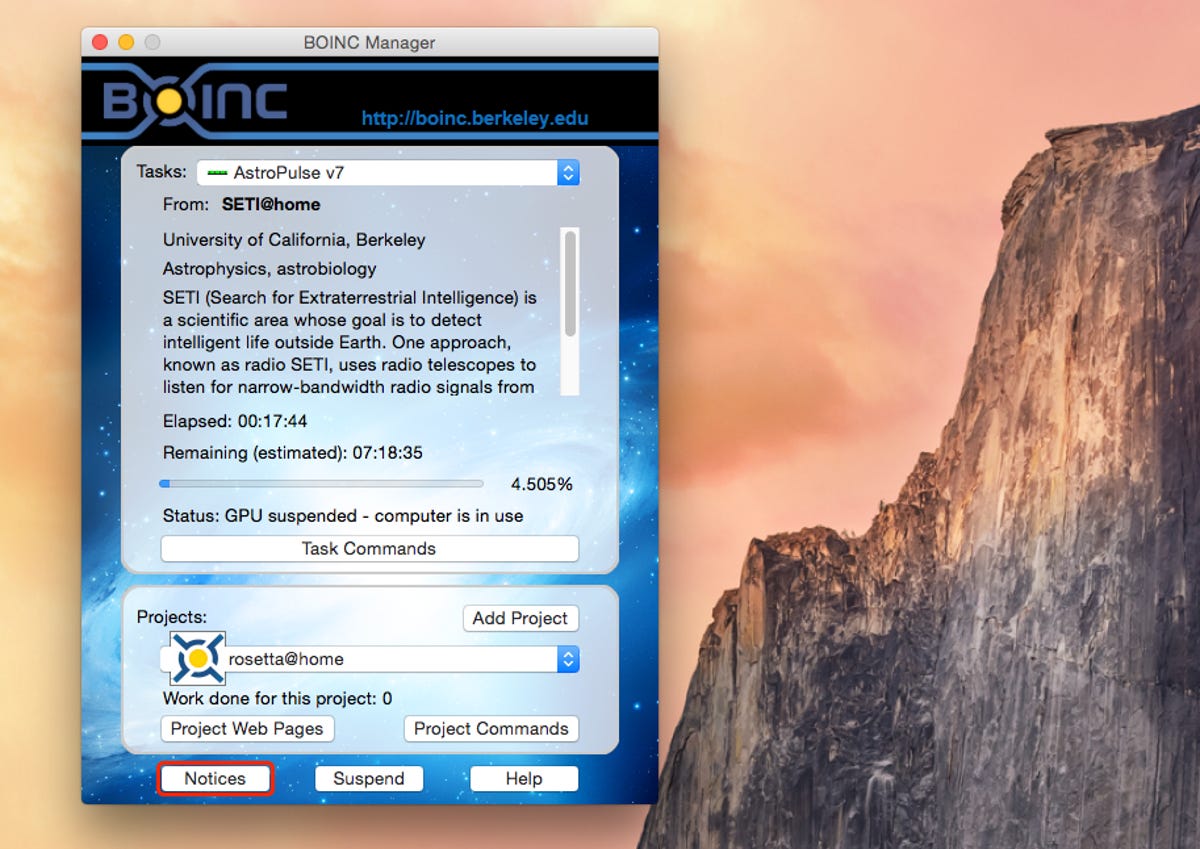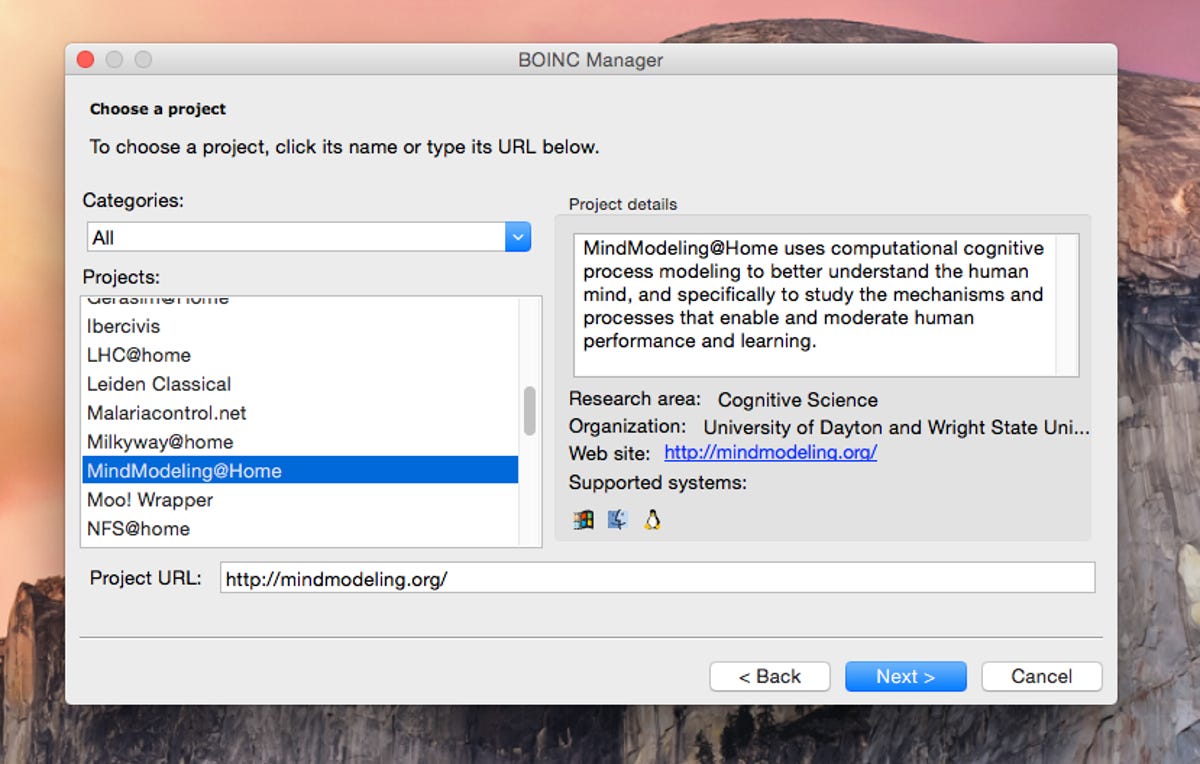

Now playing:
Watch this:
Cure diseases and find alien life with your computer…
2:09
Volunteer computing is a way for people to get their computers or phones to link up to solve complicated modeling and calculations to aid in research projects. What’s being volunteered is your machine’s spare processing power. When multiple computers are a part of the same project, these separate machines act in concert to serve as a supercomputer.

Screenshot by Iyaz Akhtar/CNET
To get started with volunteer computing, download and install BOINC Manager for your computer or the BOINC app for Android. It will give you access to projects that are built on the open-source software for volunteer computing known as BOINC. BOINC stands for “Berkeley Open Infrastructure for Network Computing.”


Screenshot by Iyaz Akhtar/CNET
After installing BOINC Manager on a computer, it will give the user options of which projects to join. After clicking “Add project” on the right side of the window, a new window will pop up showing the many projects to join. There is a list on the left side. Selecting one will bring up its description on the right side of the window. Many of these projects require a username and password. If you are going to volunteer on a number of projects, take a look at an account manager to control everything from one site instead of juggling separate log-ins for separate projects.
Requirements to run BOINC projects are also pretty low. A Windows machine needs to possess a 500MHz processor or higher. Macs can be anything from a PowerPC G3 or higher. These projects by default run when you are not using your computer and when it is plugged into a power source. On an Android phone or tablet, the device must be connected to Wi-Fi and be plugged in with the screen off before the app will function. This way, you’re not killing your battery life or data plan by accident.


Ariel Nunez/CNET
Projects of note
- Rosetta@Home: Run by the University of Washington, it models new proteins to take on diseases like Alzheimer’s, cancer, HIV, and malaria.
- SETI@home: It searches through data from a radio telescope to find signs of extraterrestrial life. Millions of people are taking part in SETI@home right now.
- MindModeling@Home: This project tries to make sense of the human mind.
- World Community Grid: Takes on a number of subprojects including mapping cancer markers, making solar technology more efficient, and decoding genomes from a wide variety of organisms.
There are a lot more BOINC projects in many different fields, including astronomy and mathematics. Pick as many as you want. Enjoy contributing to the greater good. If you are concerned about security, check out BOINC’s wiki for more information.




